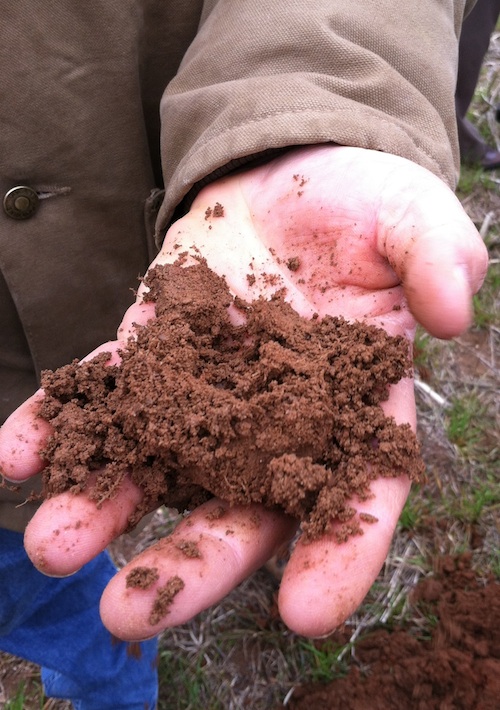The key to growing prize produce isn’t buying the highest quality transplants, sowing seeds on Good Friday or planting by the signs of the moon. University of Georgia Cooperative Extension experts say the secret’s in the soil.
“It’s all about the soil when you are planting vegetables,” said Bob Westerfield, a UGA Extension consumer horticulturist based on the university’s campus in Griffin, Ga. “If you are gardening in Georgia, chances are you are dealing with a lot of clay or sandy soils. Put your money into your soil. There’s no need to worry about the crop until you have the soil ideal.”
Get your soil tested
To help your garden soil become “ideal,” Westerfield recommends having the soil tested. A soil test is essentially a clinical report on the soil’s nutritional content. To get a soil test, take a sample of soil from your garden plot to your local UGA Extension office. For a small fee, the soil is tested at the UGA Soil, Plant and Water Lab in Athens, Ga. Operated by the College of Agricultural and Environmental Sciences, the lab uses a method developed specifically for Georgia’s soils.
“Missouri and California use extractions developed for higher pH soils. If you send them a sample of our clay soils, the soil tests may not accurately reflect the available nutrients said Julia Gaskin, CAES sustainable agriculture coordinator.
The soil report will be mailed, or emailed, to you within a few days. Follow the report’s recommendations, and your soil will be on its way to being plant worthy.
pH plays a huge role
The level of the pH in the garden soil is essential to the growth of garden plants. “If the pH is off, chemically, the plants can’t absorb the nutrition,” Westerfield said. “The soil needs to be in the 6 – 6.5 range, which is slightly acidic, for most vegetables.”
When it comes to garden soil, Gaskin says pH is often called “the master variable.” “Soils in Georgia are naturally acidic. Our subsoils are as low as 4.5 or 5.0,” she said. “Roots don’t like pH below 5.5. Very acidic is 4.0 and very basic is 9.0.”
To build up the soil’s tilth or structure, learn to read bags of soil amendments. Add four to six inches of organic material and till it into the soil. “Don’t leave it on the top. Till it in, and you will see wonders from it,” Westerfield said.
Know your manure source
Before adding animal manure to your soil, make sure you know the history of the manure and the animal that provided it. UGA Extension agents often field calls from home gardeners who want to know why their tomatoes or potatoes are twisted.
“The grower usually says he didn’t add pesticides or fertilizers, but fresh manure often still has pesticides and herbicides in it from the forage the animal fed on,” Westerfield said. “The chemical is still active, so to speak, and you end up with twisted, gnarled-looking plants.”
To help prevent this, use manure that has set for six months or manure that has been turned for at least two months, he said.
Gaskin says straight broiler litter is the most nutrient rich manure in Georgia. “If you use it, you must be safe. Stop applying it 90 days before harvest when you incorporate on tomatoes and 120 days when you apply it to root crops like carrots that touch the soil or leafy greens and strawberries that are consumed raw,” she said.
Planting cover crops in your garden plot in the winter and spring will also add nutrients to the soil. Plant a cover crop mixture of a cereal grain (wheat, rye or oats) and a legume (Austrian winter peas) in the winter and millet or buckwheat in the summer, Westerfield said. “Just till in the cover crop at least two weeks before you plant,” he said.
Not too wet, not too often
Once you have amended the soil, work it only when the soil moisture is right. “Don’t get it in the garden when the soil is too moist. Grab a fistful of soil and make a dirt bomb,” Westefield said. “Put your finger in it and if the dirt bomb doesn’t break apart into smaller segments, it’s most likely too moist to be gardening. If the soil doesn’t break apart, it’s too moist.”
Don’t till the soil if it’s too dry either. If you can’t make a ball at all, your soil is too dry. “Excessive tillage destroys soil structure,” Gaskin said. “Add mulches and till only when you need to for seedbed preparation or weed control.”
To learn more about the makeup of your garden soil, Gaskin recommends reading “Soil Biology Primer,” a book published by the U.S. Natural Resource Conservation Service, and two publications from the USDA’s Sustainable Agriculture Research and Education program – “Building Soils for Better Crops” and “Managing Cover Crops Profitably.”








